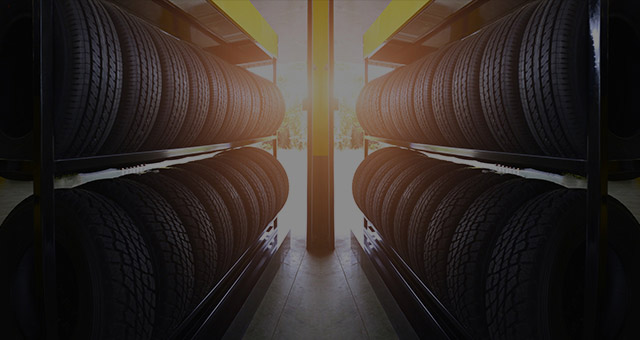Obtain Specialist Tire Provider at Tire Shop Morris: Satisfaction Guaranteed
Obtain Specialist Tire Provider at Tire Shop Morris: Satisfaction Guaranteed
Blog Article
Tire Service: Comprehending Tire Pressure Surveillance Solutions
Understanding Tire Pressure Surveillance Equipments (TPMS) is an essential facet of maintaining ideal vehicle performance and safety and security on the road. With innovations in automobile modern technology, TPMS has come to be a basic attribute in contemporary cars, giving real-time details on tire pressure levels. Digging much deeper into the ins and outs of TPMS, one can discover the various parts that make up this system and the relevance of each in ensuring accurate monitoring. From direct to indirect TPMS systems, the landscape of tire stress surveillance varies, each with its unique collection of advantages and considerations. Stay tuned to unravel the intricacies of TPMS, from maintenance tips to the obvious benefits of keeping your tires correctly pumped up. mopar tire service specials.

Relevance of TPMS
The importance of Tire Stress Surveillance Solutions (TPMS) lies in their ability to boost vehicle safety and efficiency through real-time monitoring of tire pressure levels. Preserving the right tire stress is vital for making certain optimal handling, stopping, and total safety and security of an automobile. TPMS gives chauffeurs with instant feedback on any overinflated or underinflated tires, permitting prompt modifications to be made.
Components of TPMS
Comprising different essential aspects, a Tire Pressure Tracking System (TPMS) works as an advanced safety attribute in contemporary cars. The primary elements of a TPMS consist of sensing units, a control module, and a caution indicator. Sensors are generally located in the tire shutoff stem or affixed to the wheel setting up, where they determine tire pressure and transfer information to the control module. If it identifies substantially reduced pressure in any of the tires, the control module procedures this information and sets off a caution. The warning sign, often an icon on the control panel, informs the chauffeur to check the damaged tire or tires. Some progressed TPMS designs likewise display the real tire pressure readings for every tire, supplying drivers with real-time details to make certain optimum tire efficiency and safety. By keeping an eye on tire stress continually, TPMS assists protect against accidents, minimizes tire wear, and improves fuel effectiveness, making it an important part for lorry security and performance.
Types of TPMS

On the various other hand, indirect TPMS counts on the car's wheel speed sensing units to keep track of tire stress. This system spots underinflation by contrasting the rotational speeds of the wheels. Indirect TPMS is much less expensive than straight TPMS, as it uses existing sensing units within the lorry.
While straight TPMS supplies a lot more accurate readings, indirect TPMS is less complex in style and typically requires much less upkeep. Both systems have their advantages and limitations, and the choice in between them often depends on factors such as price, lorry make, and individual you can try here choice. Recognizing the distinctions in between these two kinds of TPMS can help vehicle proprietors make educated choices pertaining to tire upkeep and safety and security.
TPMS Upkeep Tips
Efficient upkeep of TPMS is necessary for making certain optimum efficiency and security of your car. On a regular basis checking the TPMS sensing units for any kind of damages or deterioration is critical. Ensure that the sensors are clean and complimentary from particles that can disrupt their performance. Furthermore, it is suggested to check the sensor batteries regularly and replace them as needed to assure exact analyses. Conduct regular examine the tire stress levels and compare them with the TPMS readings to guarantee they correspond. Recalibrate the system adhering to the maker's guidelines if there are any discrepancies. During tire rotation or substitute, make certain that the TPMS components are handled meticulously to prevent any kind of possible damage. Last but not least, if the TPMS cautioning light brightens on the control panel, deal with the concern promptly by examining the tire pressures and the general system for any mistakes. By adhering to these upkeep ideas, you can extend the life-span of your TPMS and enhance the safety of your driving experience.
Advantages of Appropriate Tire Pressure
Preserving appropriate tire pressure, as emphasized in TPMS Maintenance Tips, is important for enjoying the various benefits connected with ideal tire over at this website pressure degrees. Among the main benefits of maintaining the appropriate tire pressure is improved gas performance. When tires are effectively blown up, there is much less moving resistance, causing much better fuel economy. Additionally, correct tire stress makes certain also tire wear, prolonging the lifespan of the tires and promoting more secure driving conditions. With the best tire stress, automobiles likewise have better handling and traction, specifically in adverse climate problems. This can improve total driving efficiency and safety for the driver and guests. In addition, preserving optimal tire stress can add to a smoother and more comfy experience by decreasing vibrations and sound created by underinflated tires. Finally, the benefits of appropriate tire pressure surpass simply tire durability; they encompass improved fuel performance, boosted safety and security, far better car efficiency, and total driving comfort.
Conclusion
To conclude, recognizing tire stress monitoring systems (TPMS) is important for keeping optimal tire pressure and making sure lorry safety and security. By acknowledging the relevance of TPMS, knowing with its components, knowing the different kinds available, adhering to appropriate upkeep pointers, and realizing the advantages of keeping proper tire stress, drivers can improve their driving experience and lengthen the lifespan of their tires. Appropriate tire pressure is crucial to effective and secure lorry operation.

Report this page